There was a time when Apple seemed to have no interest in wireless charging their devices. The then marketing director Phil Schiller even hinted that this was not a “cost-effective” solution. Since then, things have changed a lot; Not only has Apple put wireless charging almost everywhere in its devices (not just phones) but it has also launched a wireless charger for smartphones, the Magsafe power supply . However, as Apple often does (or is forced to do) when it arrives late on a product, it tries to do something different by focusing on exclusive functions that are combined with elegance and functionality. And it was the same with the Magsafe.
Magsafe power supply what it is and how it is made
Let's start from the base. What is the Magsafe power supply for iPhone? Forget the old Magsafe, a system that guaranteed the safety release of the charger from the MacBook, evoked in the name and not in the function. Basically the Magsafe power supply is in fact a simple wireless charger like the ones we find on Amazon at prices starting from around ten euros and which have compatibility with Qi technology. Applied to the back of an iPhone 12, it allows you to recharge it without inserting the Lighting cable. Although the purpose is the same as the ultra-economic competitors, it is also something different. In particular it stands out for being magnetic and providing up to 15W of power.
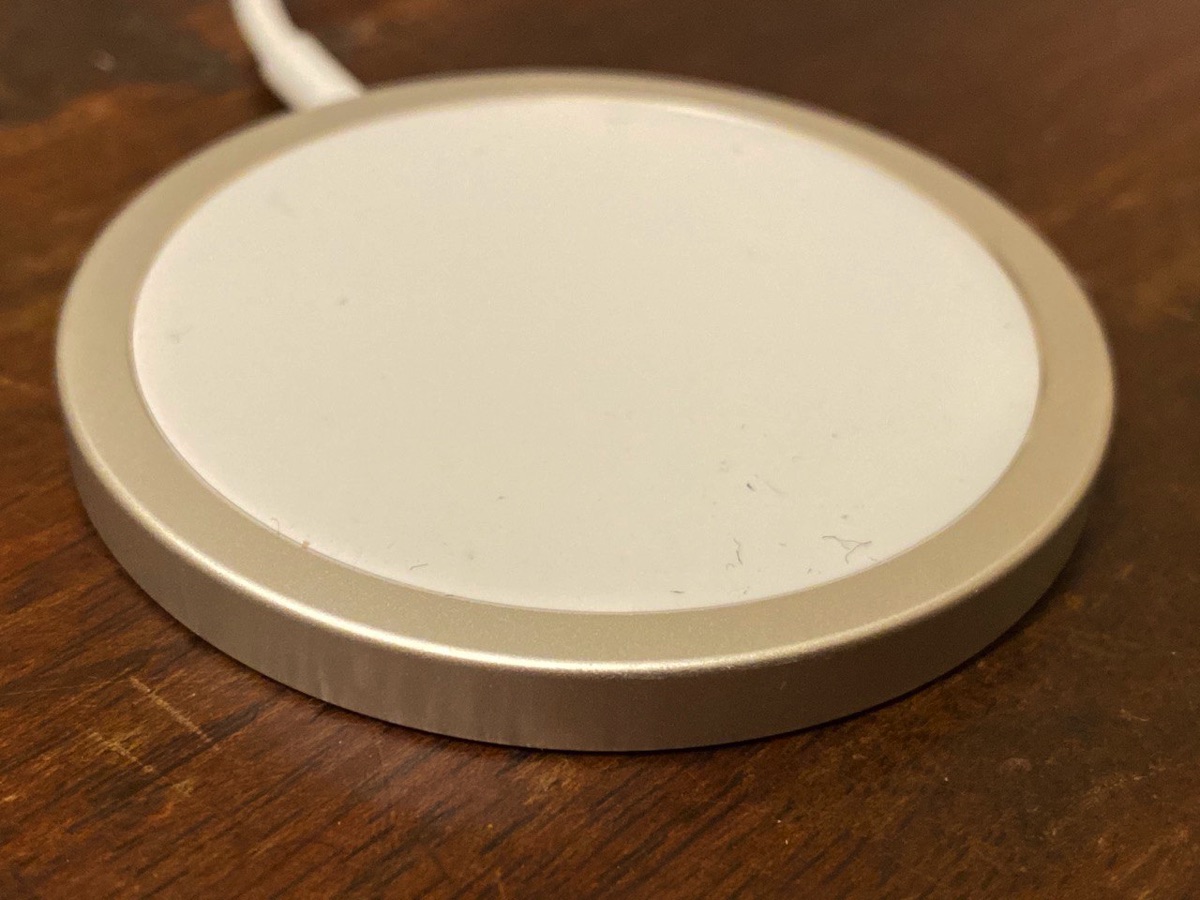
Magnetic
The Magsafe power supply contains magnets . These “marry”, hooking firmly and with precision, to those found inside the iPhone 12. The system allows you to immediately activate the charge by canceling one of the main and most annoying problems of wireless chargers: the search for the right position. At the three, four or five micrometric shifts that are necessary to locate the right location of the iPhone on the platform of a third-party charger, Magsafe replaces a “clack”. In practice, the wireless charge occurs at the first shot and the confirmation that the charge has started is manifested by an animation on the screen whose color, a touch of refinement, is the same as your iPhone or case Magsafe if you have one.
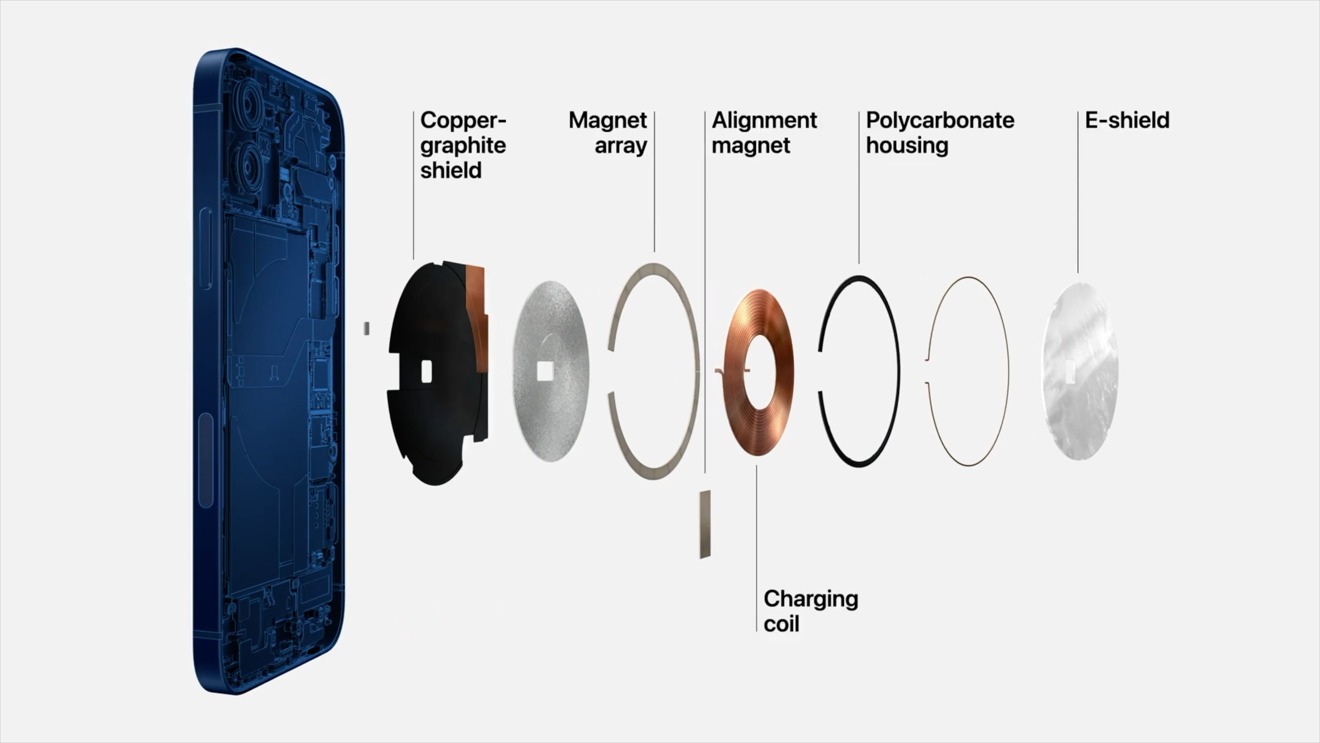
The power
The Magsafe power supply has a second major advantage over the competition. Charges iPhone at 15W (or 12W if you are talking about an iPhone 12 mini). This is twice the maximum possible speed compared to the competition that can only wirelessly charge an iPhone at 7 , 5W. Apple via firmware has in fact limited any wireless platform other than its own to this performance threshold. In the past it has been said that this choice was determined by the desire to reduce the risk of overheating; others more prosaically believe that the reason was precisely to prepare the ground for a proprietary system that offered a real advantage over the competition . Whoever is right the result is that Magsafe used with iPhone 12 beats all competitors.
Magsafe power supply as it's done
Having said what it does, let's see now how the Magsafe power supply is made even if those who know a charger for Apple Watch should have a pretty precise idea. In fact, we can describe it from the design point of view as an enlarged version of that accessory, a white plastic disc bordered by an aluminum frame . The approximately 90cm long cable has a USB-C connector. The appearance is minimalist and at the same time gives the impression of a very good quality product. Thanks to iFixit who disassembled this charger we also know how it is done inside; there is a large spiral surrounded by magnets that clip to the crown that is inside the iPhone.
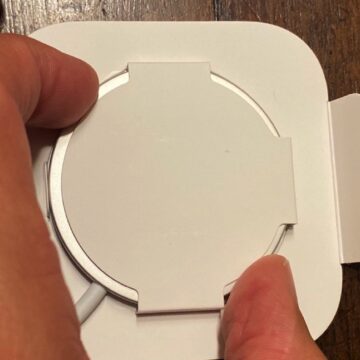 We remove the protection
We remove the protection 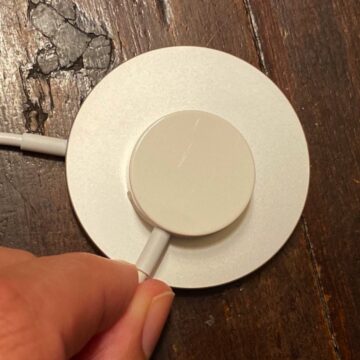 MagSafe compared to the Apple Watch Charging Pod
MagSafe compared to the Apple Watch Charging Pod 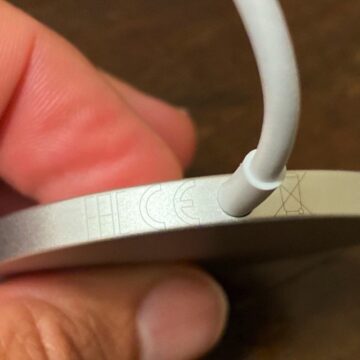 The thickness is considerable
The thickness is considerable 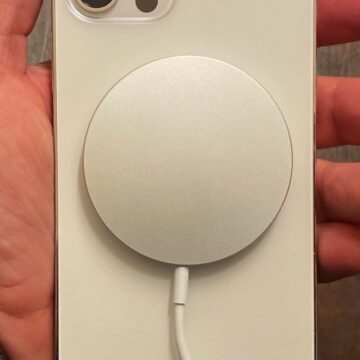 Here it is free and applied
Here it is free and applied
Proof
The Magsafe power supply as mentioned was created to recharge an iPhone faster than another wireless charger could do. He can? The answer is unfortunately more complex than a yes or a no.
Faster under some conditions
First of all, to verify the real performance of a Magsafe power supply, a fundamental condition must be proposed: a 20W charger that is also compatible with the PowerDelivery 3 protocol. PD 3.0 is a technology without the support of which the performance of a Magsafe power supply they are not optimized. For this reason if you want to check the maximum speed do not think of using any USB-C charger among those you have at home; what you need is a specific charger like the Apple one, in fact, or the 20W Anker Nano which is a PowerDelivery 3 charger and that Cyberlayman has reviewed here. There are also other PowerDelivery 3 chargers on Amazon with theoretically enough power to lead Magsafe to deliver 15W (this is the case with this one from Aukey or this one from Ugreen), but there are so many combinations of ports, performances and brands to recommend caution.
Slow charging with wireless
Wireless charging on the iPhone has always been a matter for those who do not have time problems. Writers have been using it for years, occasionally during the night to recharge their iPhones. Using a good 7.5W wireless charger, in half an hour a you can bring the battery of an iPhone 11 from 1% to 23% ; it takes more than four hours to fully charge if the phone is completely discharged. The latter part of the charge is significantly slow: it takes more than an hour to get the phone from 80% to 100% . An iPhone 12 Pro takes a little less time; goes from 1 to 23% in 30 minutes . The iPhone 12 Pro takes 4 hours to fully charge; this is because the battery has a capacity of 2,815 mAh against the 3046 mAh of the iPhone 11 Pro, about 7% less.
Fast charging with Magsafe
Charging with Magsafe and a 20W charger with Power Delivery 3 (we used the Anker Nano) is much faster . An iPhone 12 Pro goes from 1% to 30% in half an hour ; it takes less than three hours to fully charge (173 minutes to be precise). In practice it saves about an hour , certainly it is faster than any other wireless charger we have tried even if there is no need to get too excited . This is the speed that, in the end, we can check using the nefarious 5W charger and a normal Lighting cable. Using the same 20W charger with a Lightning cable on USB-C in 4 minutes you can even get to 10% (while with the Magsafe you get to 4 %) and in half an hour the iPhone goes from 0 to 53% and to fully recharge it takes less than two hours, but in just one hour you are already at 85% of the charge. Why a 20W charger that should supply 15W to the Magsafe is as fast as an obsolete 5W cable charger is explained by the heat control systems that come into effect especially from 50% of battery charge and which cause a strong reduction of the energy transfer.
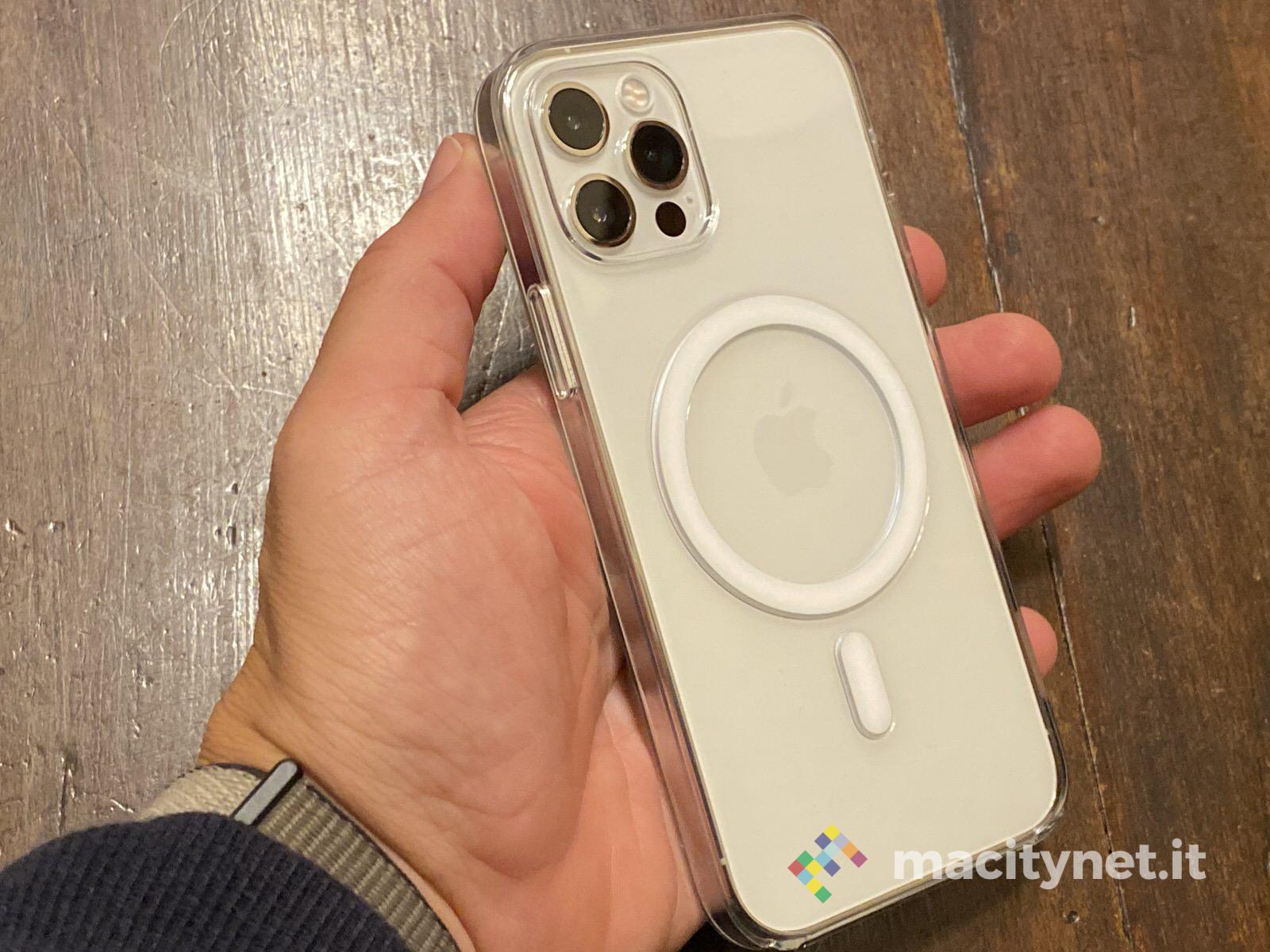 The specific case for Magsafe serves to maximize the charging performance
The specific case for Magsafe serves to maximize the charging performance
A honest comparison
In reality we do not believe that it is entirely honest to make the comparison between cable charging and wireless charging s. They are two methods that have different objectives and respond to different needs. Recharge with the cable those who want to optimize every minute of their time to have the phone ready quickly. Wirelessly recharge those who are less in a hurry and at the same time want a convenient method to recharge their phone . If anything, the comparison must be between the Magsafe and another wireless charger and here the power supply Magsafe wins hands down . Not only is it much faster than any other competitor but thanks to the magnet it offers unparalleled convenience. The phone remains in place as if it were a cable connector and you can continue to use it while any other wireless charger implies that the iPhone is placed (moreover very precisely while here the magnet does everything by itself) on a lying or tilted platform. where he must stay without picking it up if the charge is to take place. Too bad that the cable is very short ; if instead of 90 cm it had been 1.5 meters it would have been an extra element alone to push the purchase.
The other iPhones with Magsafe
An important aspect to take into consideration is that even if Apple tells us that all iPhones with wireless charging (from iPhone 8 and iPhone X upwards) are compatible with the Magsafe power supply , it does not say how much is the speed. Maybe it doesn't because used with an iPhone other than 12 the performance is horrible . If our wireless charger takes half an hour to bring an iPhone 11 Pro from 1 to 23%, using the Magsafe in the same time it recharges by 13%. This not only happens because the magnetic disk does not have a precise point where to align itself since there are no magnets inside the iPhone 11 Pro but also because for some mysterious reason the power supply, as we see in some tests (one in the video below ), it gives the iPhone less than 2W compared to the approximately 15 it gives to an iPhone 12 Pro. Buying it for a phone other than an iPhone 12 (whatever model you talk about) doesn't make any sense.
In conclusion
The Magsafe power supply is a brilliant idea from Apple implemented in an intelligent and practical way . Charges the iPhone 12 faster than any other wireless charger on the market, plus it is easy to use because thanks to the magnets you always get the best possible performance while with other competitors you are forced to groped for the position in which the charging is activated . If the Magsafe power supply has a limit this does not derive from the fact that it is, obviously and understandably, slower than the cable charge or from the fact that a particular type of charger is required, but if anything from the total investment required . There is talk of more than 100 euros between chargers (25 € if you want to buy the Apple charger or the very small Anker Nano) the Magsafe (45 euros) and a specific case (55 euros for Apple). An excellent wireless charger, albeit less comfortable and fast, like the Belkin Boostup costs around 35 euros but also a 20 euro one, like this one from Aukey, perform the same function as the Magsafe only with less practicality and a reduction in charging speed all in all not decisive.
Pro
Cons
Price and availability
The Magsafe power supply costs 45 euros on the Apple Store. On Amazon it is frequently found at a discounted price. It is also available in Apple Stores and major Apple retailers.
,





